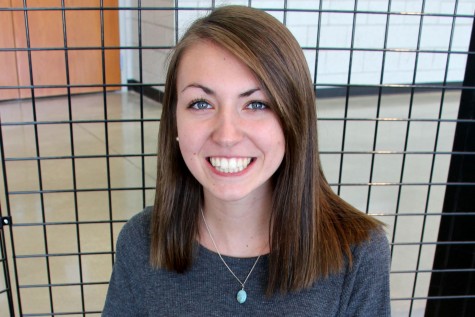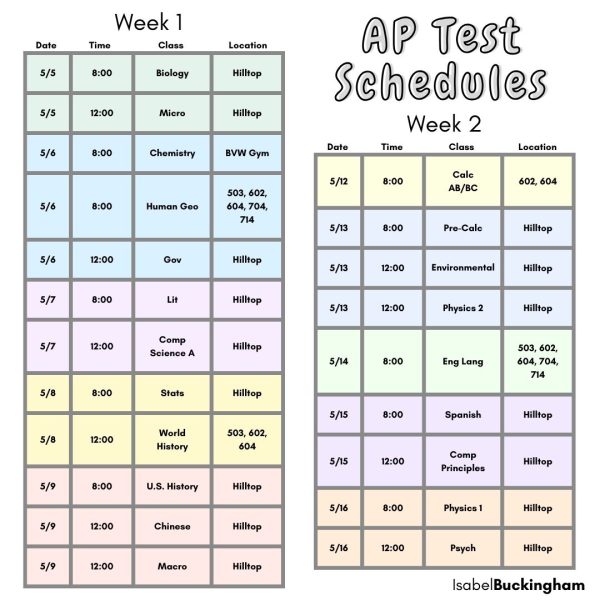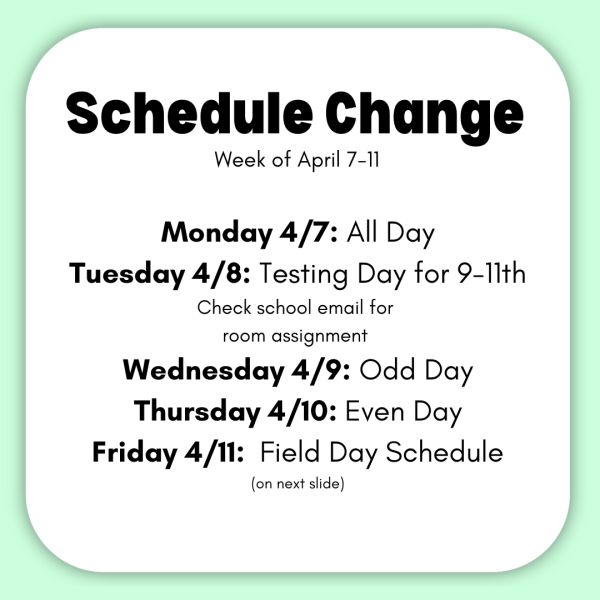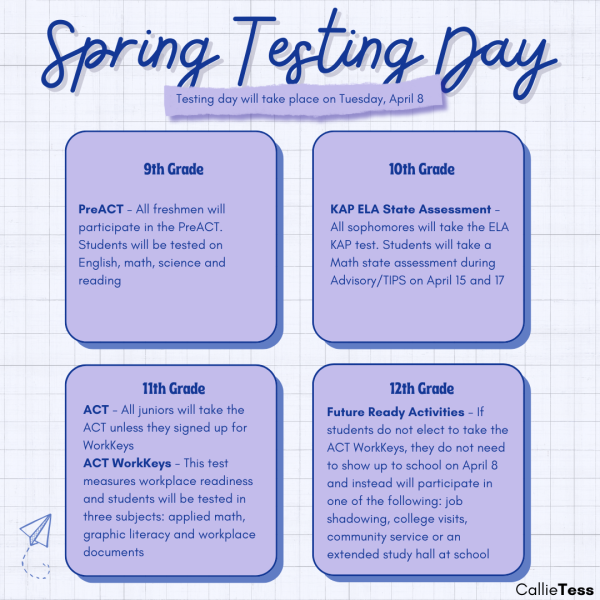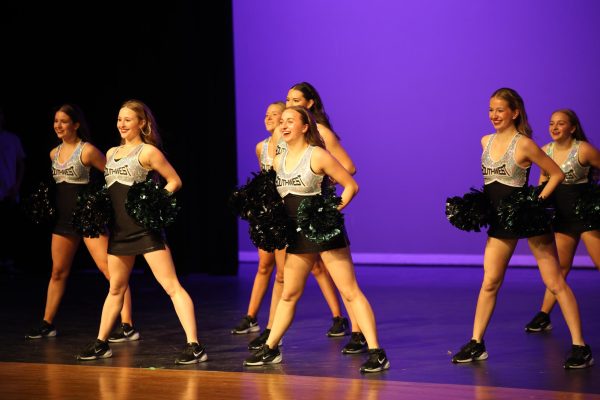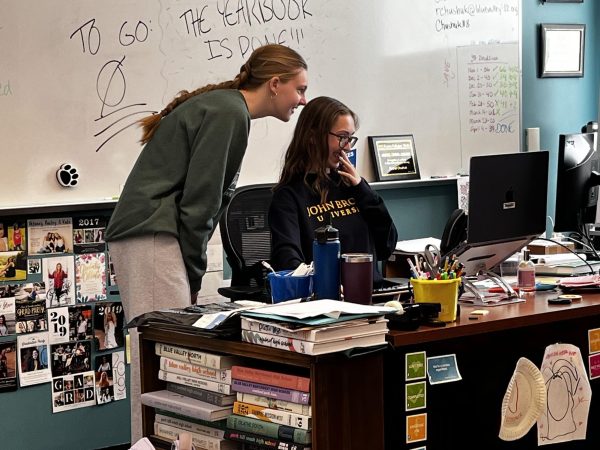Senior Christina Cornell works toward Girl Scout Gold Award by raising heart health awareness
Many students are preparing for the annual sweetheart dance on Feb. 6 the same as they would any other dance, but for senior Christina Cornell this dance is different. This dance comes with a new theme and name —the Red Heart Dance — but also with a deeper purpose. Cornell brought about changes this year as she aims to bring awareness to the student body and community about heart health while working toward receiving her Girl Scout Gold Award.
Cornell was a Girl Scout throughout elementary and middle school but decided to take a break from the association after her eighth grade year. She was reinstated as a Girl Scout this year in order to pursue her Gold Award. The award is the highest level of honor a Girl Scout can receive and entails the completion of seven steps in order to inspire others.
“Before the actual Gold Award project began, I had to complete a prerequisite project called ‘The Journey,’” Cornell said. “It was a project centered on women and leadership. After that was completed, I was able to present my project idea to the council for approval.”
The idea came from her interest in medicine and more specifically, the heart. Cornell researched information about both the American Heart Association (AHA) and the Go Red for Women campaign. Cornell connected with the cause and was inspired and motivated to work on promoting awareness and advocate for heart health.
“Many are not aware that heart disease is the number one killer in both men and women,” Cornell said. “One out of three women die from heart disease while only one in 35 women die from cancer. The campaign is all about educating women and showing that women are strong fighters too.”
Working with members of the AHA, Cornell said she pushed herself out of her comfort zone in order to receive further understanding of why it was necessary to encourage others to stay healthy. Cornell gave numerous presentations to sororities and other groups of women about the importance of a healthy heart.
“For me, this project hasn’t been just about earning an award,” Cornell said. “It’s been a huge task, and it’s definitely been more work than I expected, but it’s helped me further develop leadership skills as I’ve been given a lot of control over creating this project.”
Initially anxious about how the student body would react to her notion to raise awareness, Cornell turned to Student Council in order to help make her idea become a reality. StuCo aided Cornell with a special subcommittee to help intertwine her project with this year’s sweetheart dance. She was pleasantly surprised by the amount of support and positive feedback she received.
“People became excited about the dance and willing to show their support, which has been a huge relief,” Cornell said. “I was able to present this project in an appealing way while still promoting heart awareness and the idea of living heart-healthy.”
StuCo has supported Cornell during the process of tying things together for the student body. Executive board vice president senior Koree Case has been working in part with Cornell and said the dance will allow students to take the information they learn and use it to positively impact their own lives and the lives of others.
“Student Council felt that it would be a nice idea to pair one of our big events with a charity cause,” Case said. “The dance gets people talking and excited so we hoped that we could boost awareness at the same time.”
Cornell has acted as the middleman between the AHA and StuCo. As she works toward receiving her gold award and promoting her cause throughout the community, advocating within the school has also been all under Cornell’s control.
“[Cornell] brings StuCo weekly updates,” Case said. “She is consistently meeting with the AHA to ensure that we are doing everything we can to promote the dance and its relation to the cause.”
Executive board president Maddie Allen also jumped on board after Cornell presented the idea, as the creative and different change of theme intrigued her. Both Cornell and StuCo have created a series of activities to promote the AHA along with the sweetheart dance.
“We have made a lot of signs, and the week of sweetheart we will be tweeting out heart health facts,” Allen said. “We will also be handing out pins and little cards with facts and suggestions to keeping your heart healthy. [Cornell] even pushed the school to get a speaker for the sweetheart assembly.”
The Red Heart Dance at the moment is a one time event. There is no guarantee advocating for the AHA will be carried out during future sweetheart dances. Cornell and Allen both agree though that the idea is something that is worth considering in the years to come.
“It will be up to the student body and the new student council next year and the following years to continue this idea,” Allen said. “I think trying to raise awareness during National Wear Red Day and Heart Awareness Month helps tie everything together for the students and gives purpose behind the dance.”
Cornell said this project has helped her with more than just achieving her initial goal of being awarded her Gold Award. Speaking with a large sum of people has allowed her to empathize with those who are affected by heart disease and has become a main motivator for her project.
“I have loved being able to hear about different women’s experiences,” Cornell said. “It amazes me how strong they are. After hearing all of these women’s different experiences I felt really happy that I had been inspired and motivated to work on promoting such an important campaign.”
Exploring the many opportunities provided by the AHA and bringing light to this cause has been one of Cornell’s major successes with this project. She hopes that her project will not only allow students to be more knowledgeable about this issue but also encourage them to live out a healthier lifestyle that leads to a healthy heart. While she doesn’t expect the aftermath of this project to be life changing, she hopes the school and the community continue to raise awareness.
“I think it’s important to educate men, women and students about the risk at hand,” Cornell said. “It’s also important to help others be aware of the possibility of heart disease and provide the necessary precautions. Heart disease has affected everyone in some way or another, and by bringing awareness to the issue, we are able to gain support for finding better treatment.”


